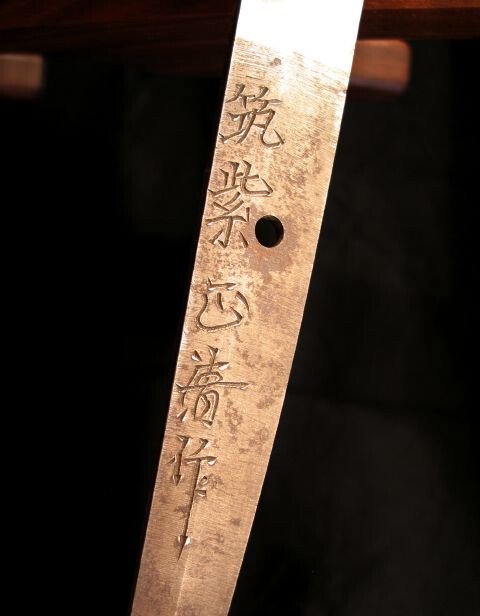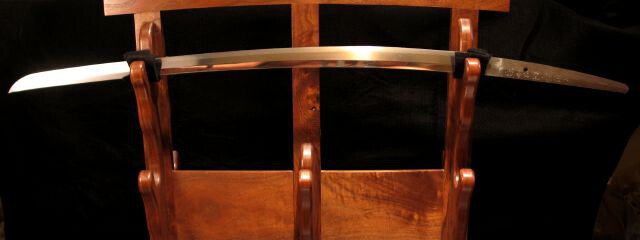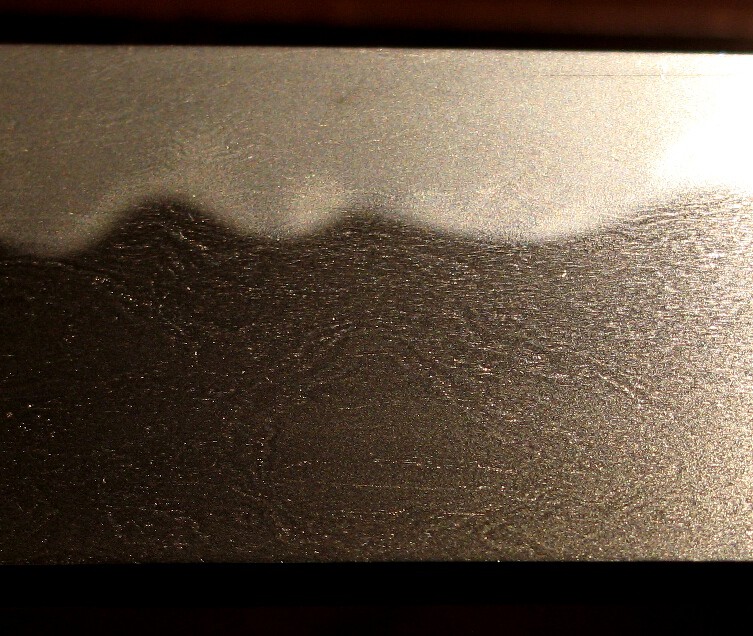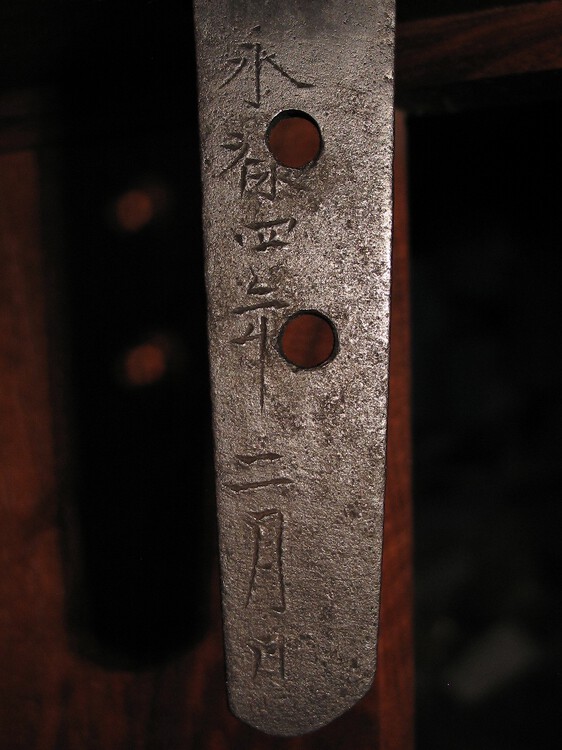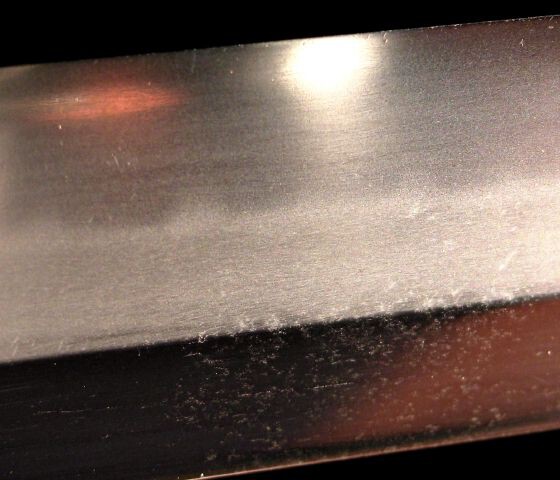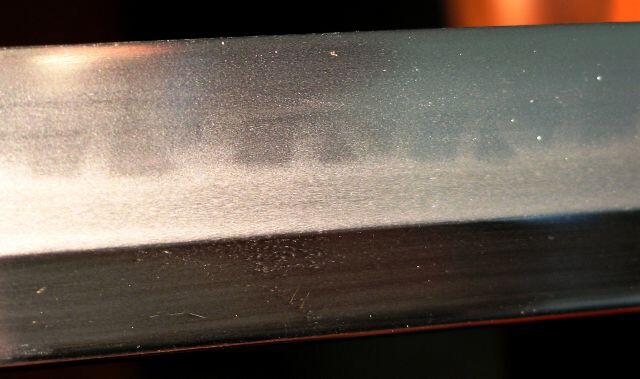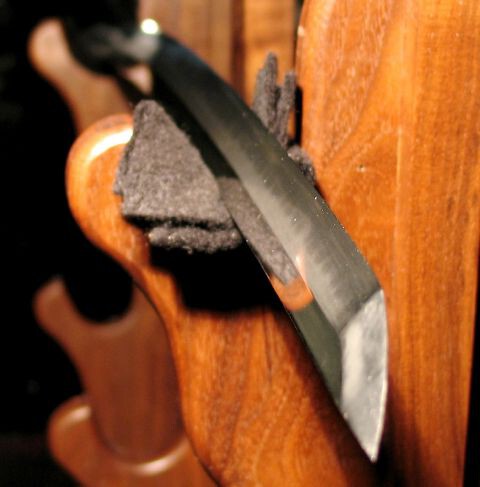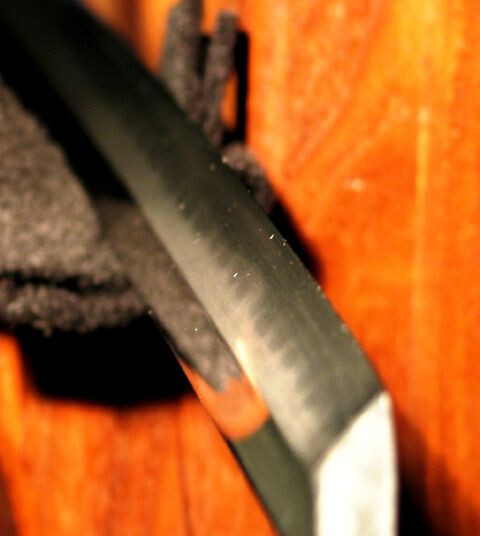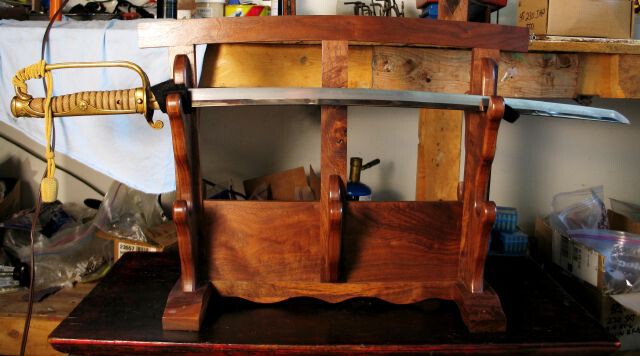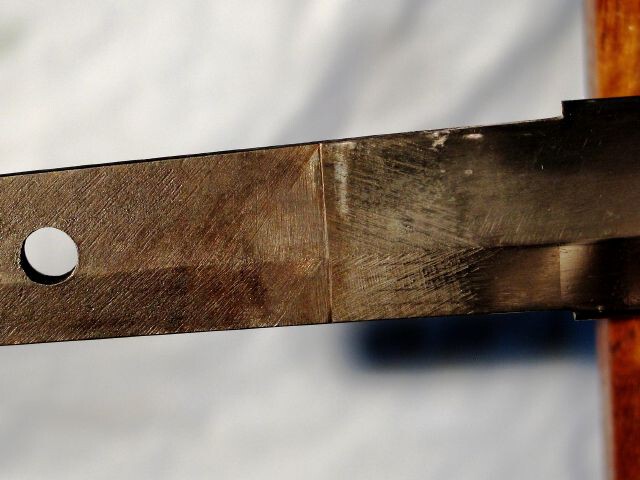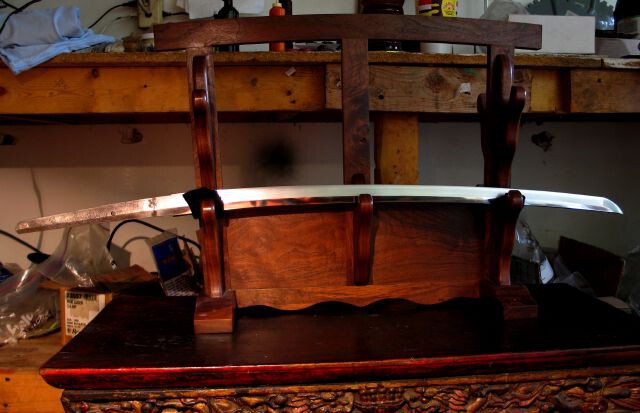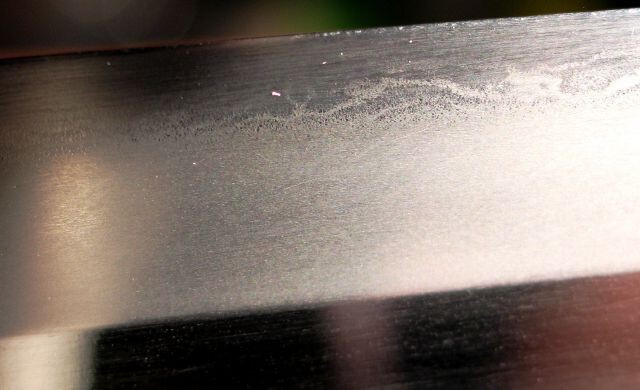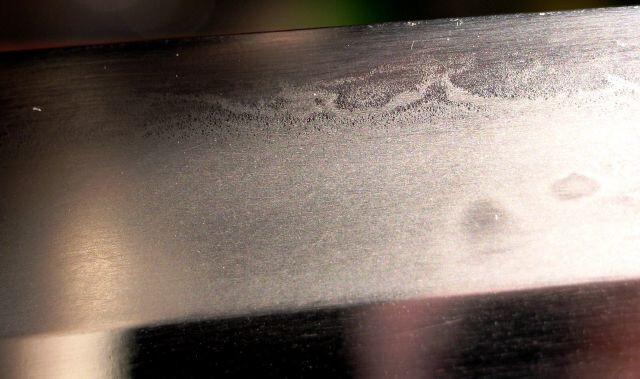
huntershooter
Members-
Posts
258 -
Joined
-
Last visited
Content Type
Profiles
Forums
Events
Store
Downloads
Gallery
Everything posted by huntershooter
-
Shin-Gunto; Kamon ID? and Hibacki
huntershooter replied to csymmes's topic in Military Swords of Japan
Not sure on the kamon, but looks like the kanji "ichi": one. Someone more knowledgeable than I will be able to answer this. Yes the habaki appears to have the "falling rain" pattern. -
Not that unusual for the bohi to run into nakago like this Eric. The blade doesn't look appreciably shortened if at all to me.
-
Nice blade with a lot of activity. I don't see a lot of hirazukuri blades with bohi. Well done on the photos.
-
"NoShu Kanetoshi Saku Kore" Your example is a ringer for Murayama Kanetoshi in Sloughs oshigata book.
-
I also fail to see the Yasukuni connection. If it were made there it would be signed YasuXXXX, not Sukemitsu. I do not believe it predates the war, date is probably correct. It is possible the tang was modified (cut) to accomodate civilian fittings or was so badly corroded was cut to salvage the rest of thw nakago. Who knows?
-
That's impressive Gabriel.
-
Nice work Ray. I would include a "centerline" dimension that indicates the torizori point. Regards.
-
Thank you gentlemen. Chris, I believe that's the case here; there are no stamps on nakago.
-
Blade signed "Masakiyo of Tsukushi Province". There is no date/nengi, however the blade certainly appears gendaito. It is obviously not the Minatogowa Masakiyo, nor the one in Sloughs. Is this possibly Tokushima Masakiyo (my thanks George san)? Would anyone have information on this smith? My thanks.
-
There is a Takehisa in Slough's ("Modern Japanese Swordsmiths"). Only info provided says; "Showa-Aichi" (province), rated "Medium-Grade Showato".
-
No mounts Stephen. Blade is in shirasaya. Thank you.
-
Stephen; The "kizu" may be a small tateware. It's so small extreme magnification is necessary to see it. I included an "overall" shot of blade. Markus; Thank you! I missed that one.
-
-
Just acquired a tanto signed "Bizen no kuni Osafune Uemon Kiyomitsu saku". Dated "Eiroku 4 nen 2 gatsu hi" (1561). The jigane is mokume/masame with ji nie, ara nie. The hamon's predominant features are sunagashi and ashi. It was difficuly to photograph activity in the hamon and hada simultaneously. I've checked all my reference literature and find no "Uemon" listed in Kiyomitsu. I have a katana signed "Magouemon" and would be interested just who "Uemon" is, how he is related to the Bizen Kiyomitsu's. I know Magouemon worked in the late 1550's. Any help on this is appreciated. My thanks.
-
Shinto blade? What is nagasa? Thank you for photos.
-
Yuzo Maruyama (Showa 22) has been a good seller in my experience. The blade in question appears to have a "tateware" (beginning of grain seperation) at the hamachi, the hamon is thin and there isn't much hamachi remaining (which would indicate a lot of polishes in it's life). It is difficult to assess a blade from photos.
-
Unsigned sword. with two mekugi ana
huntershooter replied to sturmbichon's topic in Military Swords of Japan
My guess is gendaito. Nice looking blade. Is there any apparent hada? -
Tanto Mei / Smith info request - Minamoto ??Yasuyuki??
huntershooter replied to Tcat's topic in Nihonto
Lovely blade! -
Beginner here so please be gental.
huntershooter replied to acarasso's topic in Military Swords of Japan
Well, as gently as possible; your new blade is most probably oil quenched and not tamahagane, hence the reference to it being "Showato" in the auction. I can second the "Conniseur's..." book for a first book. You would have been better off studying before buying. Don't let this negatively color your outlook on Nihonto. -
English INDEX of Gendai-toko-meikan.
huntershooter replied to k morita's topic in General Nihonto Related Discussion
Yes, please add kanji. Thank you for your effort Morita san! -
-
Here's a mumei Kyu Gunto which I would appreciate help with. My guess is this is a Meiji era blade. Any conjecture on age/school etc. is welcome. nagasa: 26.75" 67.9cm sori: .46" 11.7mm moto haba: 1.08" 27.4mm saki haba: .7" 18mm moto gasane: .24" 6mm saki gasane: .2" 5.4mm The blade is slender, almost "dainty". Hamon is wide suguba based choji/gunome with ashi, nioi guchi. Hada is tightly forged, nearly muji. Thank you.
-
I'm curious if anyone might have a lead on which Kaneshige this might be. The mei is not close to Sloughs example "Morita Kaneshige", nor does it resemble either the Shoshin or Nakirishi examples of "Murayama Kanshige". The nakago has no stamps and is (by the mei) made from tamahagne ("motte tamahagne"). The forging appears well done, if modest. Thank you.
-
Absolutely agree with Stephens sentiment. Thank you Chris.

